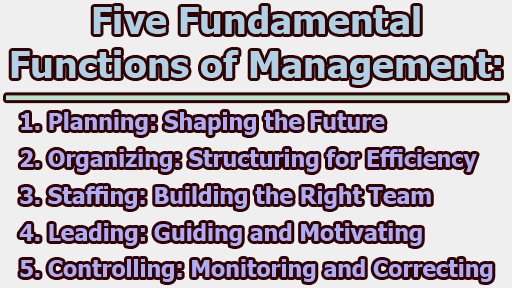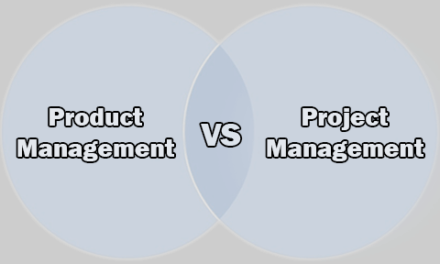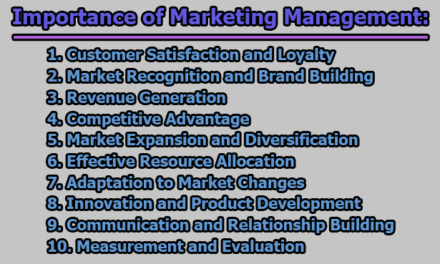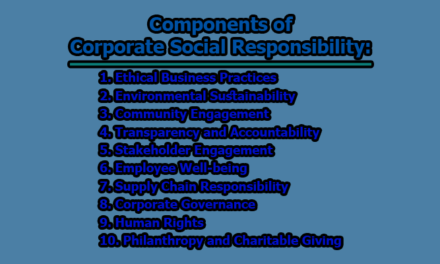Five Fundamental Functions of Management:
Management is a multifaceted discipline that involves a range of activities aimed at achieving organizational goals and maintaining effective operations. These activities are grouped into five fundamental functions of management: planning, organizing, staffing, leading, and controlling. These functions form the core framework through which managers guide their teams and organizations toward success. In this article, we will delve into each function and highlight its significance in the management process.
1. Planning: Shaping the Future:
Planning is the cornerstone of effective management, serving as the foundation upon which all other functions are built. It involves a systematic process of defining organizational objectives and devising strategies to achieve them. Effective planning guides an organization’s efforts, helping it adapt to changes, make informed decisions, and allocate resources efficiently.
a) Setting Objectives: Clearly defined objectives provide a sense of purpose and direction for the organization. These objectives should be specific, measurable, achievable, relevant, and time-bound (SMART). For example, a technology company might set a SMART objective to increase its market share in a specific segment by 10% within the next year.
b) Strategic Analysis: Before creating plans, managers conduct a comprehensive analysis of the internal and external environment. This includes evaluating the organization’s strengths and weaknesses, as well as identifying opportunities and threats in the external market. This analysis enables managers to develop strategies that leverage strengths and capitalize on opportunities while mitigating weaknesses and addressing threats.
c) Developing Strategies: Based on the strategic analysis, managers formulate strategies that outline how the organization will achieve its objectives. Strategies provide a broad roadmap for achieving long-term goals. For instance, a retail company aiming to expand internationally might develop a strategy that focuses on entering new markets while adapting its product offerings to local preferences.
d) Tactical and Operational Plans: Strategies are broken down into tactical and operational plans. Tactical plans outline how specific departments or teams will contribute to the overall strategy. Operational plans detail the day-to-day tasks and activities required to execute tactical plans. This hierarchical approach ensures alignment at all levels of the organization.
2. Organizing: Structuring for Efficiency:
Organizing involves designing the organizational structure, allocating resources, and creating a framework for effective coordination and execution. It ensures that tasks are carried out efficiently and that resources are used optimally.
a) Organizational Structure: The structure defines how the organization is divided into departments, teams, and reporting relationships. Common structures include functional, divisional, matrix, and network structures. The choice of structure depends on factors such as the organization’s size, complexity, and goals.
b) Division of Labor: Specialization is a key principle in organizing. Division of labor involves assigning specific tasks to individuals or groups based on their expertise. This specialization leads to increased efficiency, as employees become highly skilled in their assigned tasks.
c) Coordination: Different departments and teams must work together to achieve common objectives. Effective coordination involves creating mechanisms for communication, collaboration, and the exchange of information. Regular meetings, cross-functional teams, and shared resources contribute to coordination.
d) Delegation: Managers delegate authority and responsibility to employees. Delegation empowers employees to make decisions within their areas of expertise, promoting ownership and accountability. It also frees up managers to focus on more strategic tasks.
3. Staffing: Building the Right Team:
Staffing is concerned with acquiring, developing, and retaining a capable workforce that contributes to the organization’s success. A well-staffed organization has the talent needed to achieve its objectives and adapt to changing circumstances.
a) Recruitment: Effective recruitment involves identifying job requirements, sourcing candidates, and selecting the best fit for the organization. This process ensures that the organization has the right skills and competencies to succeed.
b) Training and Development: Staffing extends beyond recruitment. Managers must provide ongoing training and development opportunities to help employees improve their skills and knowledge. This not only benefits employees but also enhances the organization’s overall performance.
c) Performance Appraisal: Regular performance evaluations provide feedback to employees regarding their strengths and areas for improvement. These appraisals help align employee performance with organizational goals and provide opportunities for growth and development.
d) Succession Planning: Preparing for the future involves identifying and nurturing potential leaders within the organization. Succession planning ensures a smooth transition when key leaders retire or move on, reducing disruptions in organizational continuity.
4. Leading: Guiding and Motivating:
Leading involves inspiring and guiding employees to contribute their best efforts toward achieving organizational goals. Effective leadership fosters a positive work environment, encourages collaboration, and enhances employee engagement.
a) Communication: Clear communication is essential for successful leadership. Managers must provide clear instructions, set expectations, and ensure that employees understand their roles in achieving objectives. Open communication channels foster trust and transparency.
b) Motivation: Motivating employees involves understanding their needs and providing incentives that align with their aspirations. Recognition, rewards, career advancement opportunities, and a supportive work environment are all factors that contribute to employee motivation.
c) Conflict Resolution: Conflicts and disagreements are inevitable in any organization. Effective leaders address conflicts promptly and constructively, seeking solutions that benefit all parties involved. This approach helps maintain a harmonious work environment and preserves team cohesion.
d) Decision-Making: Leaders make critical decisions that impact the organization’s direction and outcomes. Effective leaders gather relevant information, consider alternative solutions, and make informed choices that align with the organization’s goals and values.
5. Controlling: Monitoring and Correcting:
Controlling ensures that the organization remains on track to achieve its goals. It involves monitoring performance, comparing it to planned objectives, and taking corrective actions when deviations occur.
a) Performance Measurement: Key performance indicators (KPIs) are established to measure progress toward goals. These metrics provide a quantitative assessment of performance and help managers identify areas that require attention.
b) Comparing Actual vs. Planned: Regularly comparing actual results to the planned objectives highlights discrepancies and allows managers to understand where the organization is succeeding and where adjustments are needed.
c) Taking Corrective Action: When deviations from the plan are identified, managers take corrective actions. These actions could involve adjusting strategies, reallocating resources, or revising tactics to bring performance back in line with objectives.
d) Feedback Loops: Effective controlling relies on feedback loops. Feedback from performance evaluations, customer feedback, and market trends informs decision-making and provides insights for continuous improvement.
In conclusion, the five fundamental functions of management—planning, organizing, staffing, leading, and controlling—work in concert to guide organizations toward achieving their objectives. Each function plays a vital role in ensuring efficiency, effectiveness, and the attainment of organizational goals. Successful management requires a balanced approach that integrates these functions seamlessly, allowing managers to navigate challenges, capitalize on opportunities, and lead their teams to sustained success.
Frequently Asked Questions (FAQs):
Why is planning considered the foundational function of management?
Planning sets the stage for all other functions by defining objectives and strategies. It provides direction, helps in resource allocation, and guides decision-making. Without effective planning, other functions lack clarity and purpose.
What is the significance of organizing in management?
Organizing creates a structured framework that ensures resources are allocated efficiently, tasks are coordinated, and roles are clearly defined. It enhances efficiency, minimizes duplication of efforts, and promotes smooth operations.
How does staffing contribute to organizational success?
Staffing ensures that an organization has the right people with the necessary skills and competencies to achieve its goals. It impacts overall performance, employee morale, and the organization’s ability to adapt to changes.
What role does leadership play in management?
Leadership guides employees toward achieving organizational goals. Effective leaders inspire, motivate, and provide direction. They foster a positive work culture, address conflicts, and make informed decisions that align with the organization’s vision.
What is the purpose of the controlling function in management?
Controlling involves monitoring ongoing activities, comparing actual performance to planned objectives, and taking corrective actions when necessary. It ensures that the organization remains on track, deviations are identified early, and goals are achieved.
How do these functions interact with each other?
The functions of management are interrelated and interconnected. Planning lays the foundation for organizing, which in turn supports staffing, leading, and controlling. Effective communication and coordination between these functions ensure seamless operations and goal attainment.
Can these functions be applied across different organizational levels?
Yes, these functions are applicable at all organizational levels. While the emphasis and scope of each function may vary, the underlying principles remain consistent. Top-level managers focus more on planning and organizing, middle-level managers bridge the gap, and lower-level managers emphasize leading and controlling.
What happens if one of these functions is neglected?
Neglecting any function can disrupt the management process. For example, without proper planning, the organization lacks direction. Neglecting staffing could lead to skill gaps, and ignoring control might result in inefficiencies and missed targets.
How do these functions contribute to organizational adaptability?
These functions enable organizations to respond to changes effectively. Planning allows adaptation to new market trends, organizing ensures resources are allocated for innovation, staffing brings in talent for new initiatives, leadership guides teams through transitions, and controlling helps identify areas that need adjustment.

Assistant Teacher at Zinzira Pir Mohammad Pilot School and College










